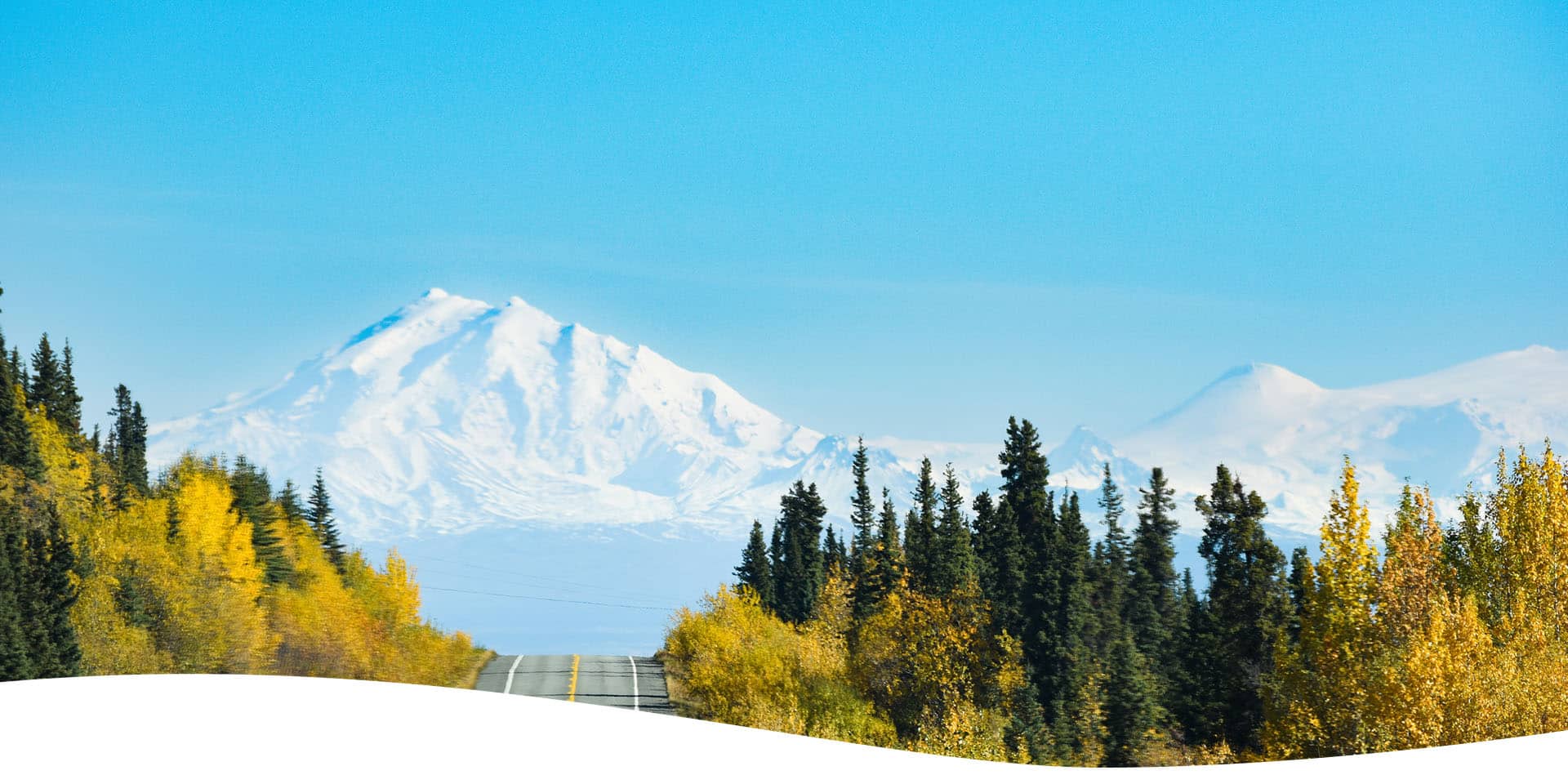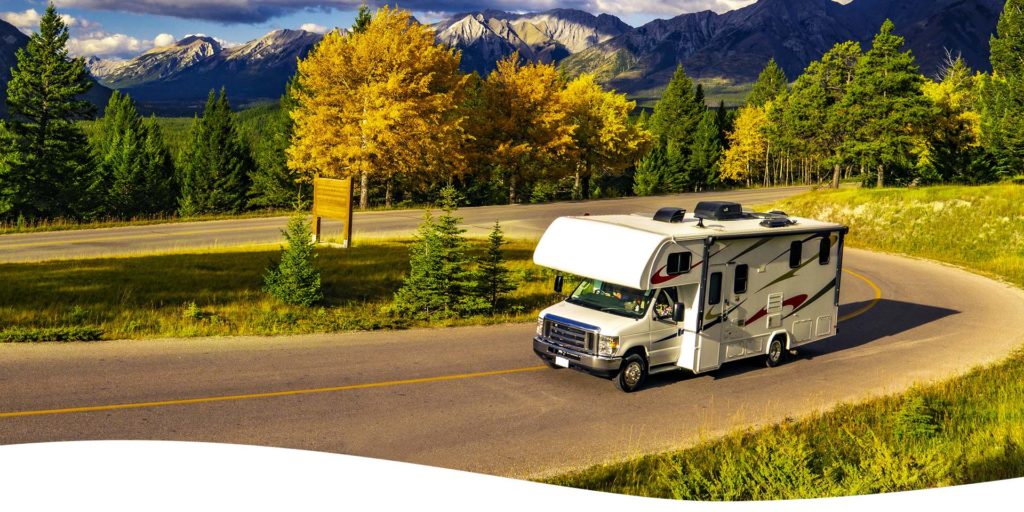Quick Navigation:
What state has the most national parks? Many travelers ask this question when planning which parks to visit. Themed trips within one state are great ways to explore the state's unique culture, history and geography. Each national park celebrates nature and preservation, giving visitors insights into local ecosystems and a chance to observe wildlife in their natural habitats.
Which States Have the Most National Parks?
Knowing which state has the most national parks in the U.S. can help individuals plan road trips that optimize their access to these iconic spaces. Many travelers want to visit every national park, so knowing where the bulk of them are can streamline their goal progress.
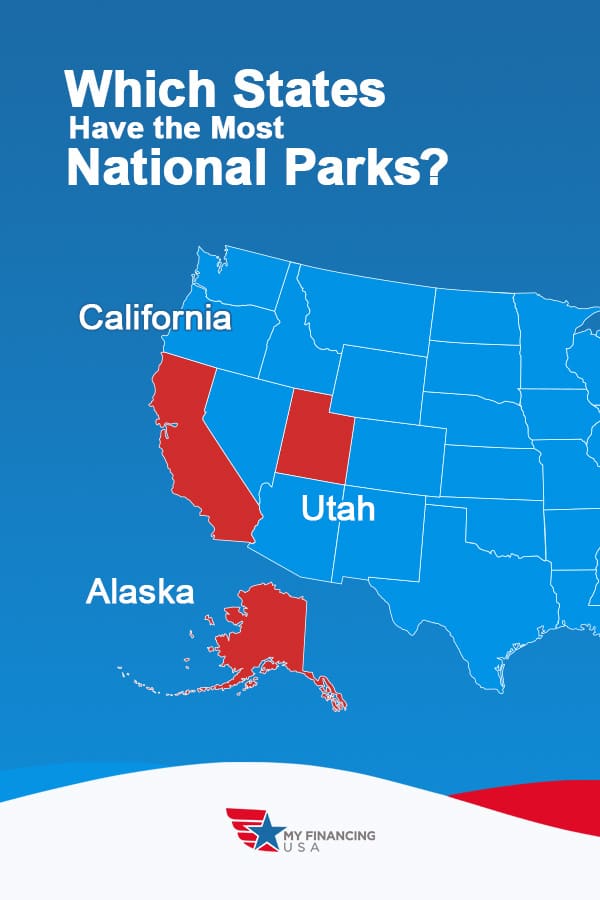
California
California is the U.S. state with the most national parks, totaling nine national parks across its diverse landscape. From coastal islands to rich forests, you can find various experiences and adventures within the Golden State. The parks are home to some of the continent's and world's records, showing nature's beauty. These are California's nine national parks:
- Channel Islands National Park: Channel Islands National Park is a collection of five islands off the coast of California where visitors can enjoy the Pacific Ocean through surfing, snorkeling, kayaking and whale watching. Like other parks, you can hike and camp on the islands. The unique activities and endless blue waters are a must-see when visiting the west coast, and the different islands allow you to choose an experience that fits your expectations.
- Death Valley National Park: This national park crosses the border between California and Nevada, so you can visit two states at once. It is the largest national park in the contiguous states, ranging over 3 million acres. The Badwater Basin is the lowest point in North America, sitting 282 feet below sea level. Despite its name, you can find diverse wildlife thriving in Death Valley, including coyotes, bighorn sheep and Death Valley pupfish. Walk the salt flats, stargaze, hike and mountain bike in this unique national park.
- Joshua Tree National Park: Joshua Tree National Park is the intersection between the Mojave and Colorado deserts, resulting in diverse wildlife, landscapes and history. The diversity expands into the available activities at Joshua Tree. Here, you can enjoy rock climbing, horseback riding, stargazing, hiking and camping. The plant life is especially rich in Joshua Tree, introducing visitors to various species of juniper and creosote bushes.
- Kings Canyon National Park: California has some of the oldest and largest trees — sequoias and redwoods. Kings Canyon is home to several groves of sequoias, allowing you to walk amongst the ancient trunks. In the winter, this park gets large amounts of snow, creating opportunities for skiing and snowshoeing through the park.
- Lassen Volcanic National Park: As its name suggests, Lassen Volcanic National Park has several volcanoes and other geothermic landmarks. At this park, you can see fumaroles, which are holes in the earth's crust that produce volcanic gases and steam. The park also has meadows, streams and wildflowers for visitors to explore.
- Pinnacles National Park: If you've never heard of Pinnacles National Park, don't worry. This park is one of the newest additions to the national park system, founded in 2013. The park is full of unique rock formations, making it excellent for rock climbing and hiking. If you love bird watching, you can witness several native Californian species here, including the California condor, prairie falcons and acorn woodpeckers.
- Redwoods National Park: While Kings Canyon is full of sequoia, you can find abundant and thriving redwood groves at Redwoods National and State Parks. The National Parks Service (NPS) and the California Department of Parks and Recreation both manage the various redwoods parks for optimized protection and enjoyment. You can take scenic drives or walks through the groves to appreciate these native California trees.
- Sequoia National Park: Sequoia National Park shares a border with Kings Canyon National Park, making it easier for visitors to optimize their time amongst the trees and for NPS to manage visitors and protective services. Here, you can visit the largest tree on the planet, nicknamed General Sherman. It measures 275 feet tall and has a diameter of over 36 feet. The park also offers scenic drives, hikes and camping experiences.
- Yosemite National Park: Yosemite National Park offers many scenic hikes, with over 750 miles to explore. The park's diversity ensures visitors can find exactly what they want, from waterfalls and jutting granite rock fixtures to winding streams and sequoia groves. The range of trails allows visitors to choose their experience based on their level and attractions. Visitors can also go camping, fishing, birdwatching, star gazing and rock climbing at Yosemite.
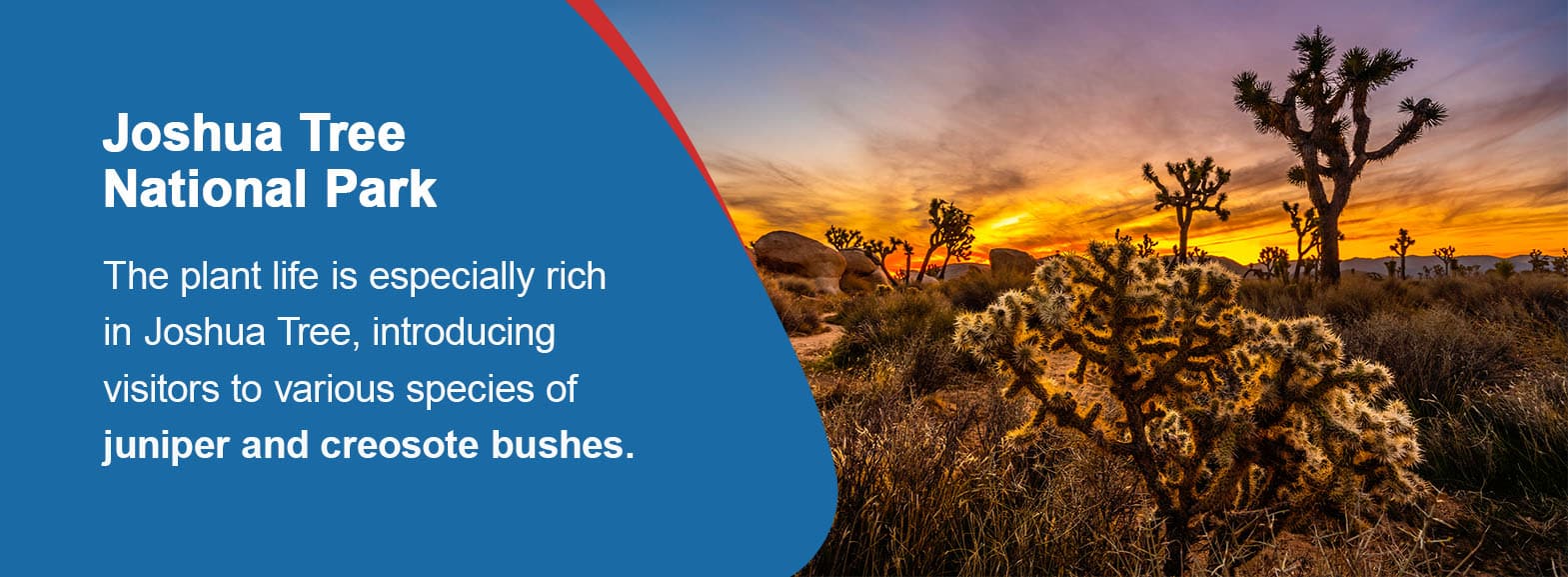
As the state with the most national parks, California is an excellent location for your next road trip. You can visit several California national and state parks or cross the borders to explore others on the west coast.
Alaska
As the country's largest and northernmost state, Alaska has the second most national parks per state. The Last Frontier boasts eight national parks, ranking it just below California in number. Because of the state's vastness, it has some of the largest national parks and excellent scenic diversity. The eight Alaskan national parks are:
- Denali National Park and Preserve: Denali National Park and Preserve is home to the tallest mountain in North America. Mt. Denali reaches over 20,000 feet, looking over the park and providing excellent landscapes. The park spans over six million acres and protects many types of wildlife, including moose, arctic fox, sheep, wolves and bears. When searching for the perfect activities, you can hike, bike, bird watch, ski and attend sled dog demonstrations.
- Gates of the Arctic National Park and Preserve: If you want a more free-range national park experience, the Gates of the Arctic has no roads or trails. Visitors can explore the 8.4 million acres of natural spaces as if untouched by human interference. Because park rangers recommend higher proficiency in outdoor survival skills before interacting with this park, many visitors book outfitters, guides and air taxis to take them through the park. In the winter, you can observe aurora borealis here.
- Glacier Bay National Park and Preserve: If you want to see Alaska's scenic diversity in one place, Glacier Bay allows you to explore its coastlines, fjords and mountains in a protected park spanning 3.3 million acres. You can enjoy the water with private boats or cruises and explore the aquatic wildlife, including sea lions. Glaciers frequently move here, allowing you to witness how this phenomenon impacts the land and nature.
- Katmai National Park and Preserve: Katmai National Park and Preserve is best known for its wildlife. Brown bears are abundant here, and the park protects their natural habitat. Many visitors come to watch the animals flock to the rivers and hunt for salmon, another vital part of the Katmai ecosystem. The park is also home to many volcanoes, especially in the Valley of Ten Thousand Smokes, which was named for fumaroles that emitted ash after a volcanic eruption.
- Kenai Fjords National Park: Kenai Fjords National Park is a glacial paradise. The Harding Icefield is a vast expanse of ice with mountains peaking from beneath it that you can hike. On this trail, you can see Exit Glacier, where you can ski, snowmobile, bike and dog sled in the snow. You can also book fjord cruises or kayak to see the park's aquatic ecosystems and mountains reflecting off the water.
- Kobuk Valley National Park: Kobuk Valley is an excellent spot for camping and fishing, but it also offers many unique experiences. The sand dunes highlight the diversity of Alaska's wilderness. Twice a year, caribou migrate across the Kobuk River for a rare sight of these majestic creatures. You might even see some newborns within the herd. Like the Gates to the Arctic, this park has no roads, requiring individuals to book air taxis to access the facilities.
- Lake Clark National Park and Preserve: Lake Clark is another Alaskan national park you can't get to by car or road. Your adventure will start on a boat or plane, giving you a scenic introduction to the park's landscape. The park offers many experiences, from camping, hiking and hunting to observing wildlife like bears and moose or staying in a picturesque cabin on crystal lakes.
- Wrangell-St. Elias National Park and Preserve: This national park is the U.S. largest national park, which even crosses the border with Canada. This park spans about 13.2 million acres, covering mountains, glaciers, rivers, icefields, active volcanoes and mines. This park is home to nine of the highest peaks in the U.S. and includes four major mountain ranges. Visitors can observe caribou, Dall sheep, mountain goats, salmon, sea lions and seals throughout the park. The vastness of Wrangell-St. Elias offers endless opportunities to explore the Alaskan wilderness.
Alaska can offer many road trippers a way to explore several of the most acclaimed national parks. The variety ensures something matches your skill level and desired experience.
Utah
Coming in third place, Utah boasts five excellent national parks, each highlighting the beautiful and diverse scenery the West offers. The number of national parks makes Utah perfect for a national park road trip, allowing you to see multiple parks on your route. The five national parks in this state are:
- Arches National Park: Arches National Park is aptly named — this park is full of brilliant red rocks forming over 2,000 unique arches. You can hike through the formations on various trails of different lengths and difficulty levels. If you stay at one of the many campsites here, you can experience the endless night sky with excellent views of the constellations and our galaxy.
- Bryce Canyon National Park: Bryce Canyon shows off pink, white and red rock spires, nicknamed hoodoos. For a close-up look at this unique geological phenomenon, you can hike, bike, horseback ride and drive among the rock formations. The Bryce Amphitheater has numerous hoodoos for the best views. Throughout the canyon, you can spot elk and peregrine falcons.
- Canyonlands National Park: When you want to see how water changes the earth over time, you can head to Canyonlands National Park. The Colorado River and other bodies of water cut through the red rocks over time with powerful currents, creating stunning rock formations and deep canyons. The rivers split the park into distinct zones, offering scenic overlooks, challenging hikes and water access.
- Capitol Reef National Park: Utah is full of dramatic rock formations and color, and Capitol Reef National Park offers another opportunity to explore these natural fixtures. In the Cathedral Valley District of the park, you can see slabs of red rock rising dramatically from the earth, almost looking like buildings. In the Waterpocket Fold District, you can view rocks formed from the earth's wrinkling. Visitors can enjoy horseback riding, hiking, camping, star gazing and more in this national park.
- Zion National Park: Zion was Utah's first national park, and it deserves the title. With sprawling valleys surrounded by rock cliffs and interjected with rushing rivers, there is much to see and do here. You can hike Angels Landing for a stunning panoramic view of the park or work through the narrowest portion of the canyon via The Narrows. You can observe various wildlife and geographic formations throughout the park for an incredible experience.
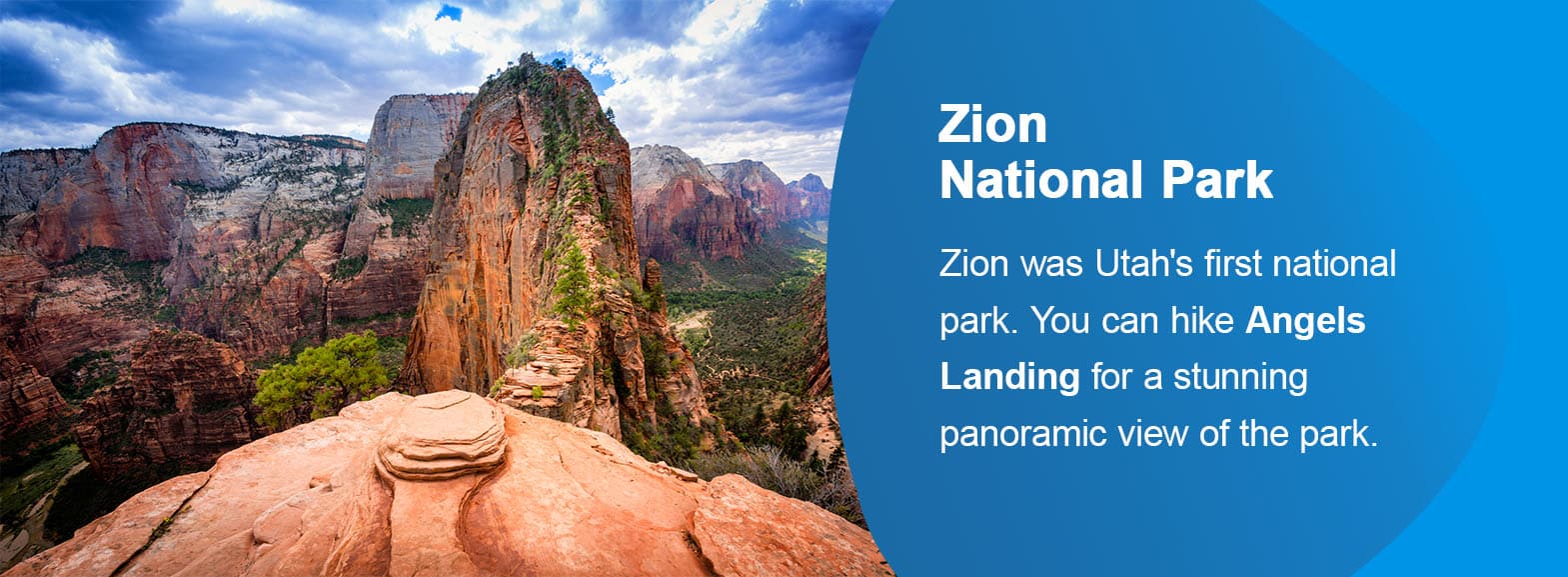
Visiting some of Utah's national parks is essential when in the West. The state's proximity to other iconic spots like the Grand Canyon allows travelers to get the most out of this region while visiting and road-tripping.
States With No National Parks
While these three states have the most national parks, many states lack even one. When planning a trip, you can still find many amazing sites and attractions in these states, including state parks managed by their parks and recreation departments. These are the U.S. states without national parks:
- Alabama
- Connecticut
- Delaware
- Georgia
- Illinois
- Iowa
- Kansas
- Louisiana
- Maryland
- Massachusetts
- Mississippi
- Nebraska
- New Hampshire
- New Jersey
- New York
- Oklahoma
- Pennsylvania
- Rhode Island
- Vermont
- Wisconsin
While these states have no national parks, NPS is often still present, helping to manage other important sites. Most states have historical trails, parks and monuments that NPS helps maintain and protect. As you map out your next road trip, you can stop at other NPS sites in these states on your way to your next national park. You might learn something about the state and its history while taking in the local scenery and charm.
Plan Your Trip to the National Parks With My Financing USA
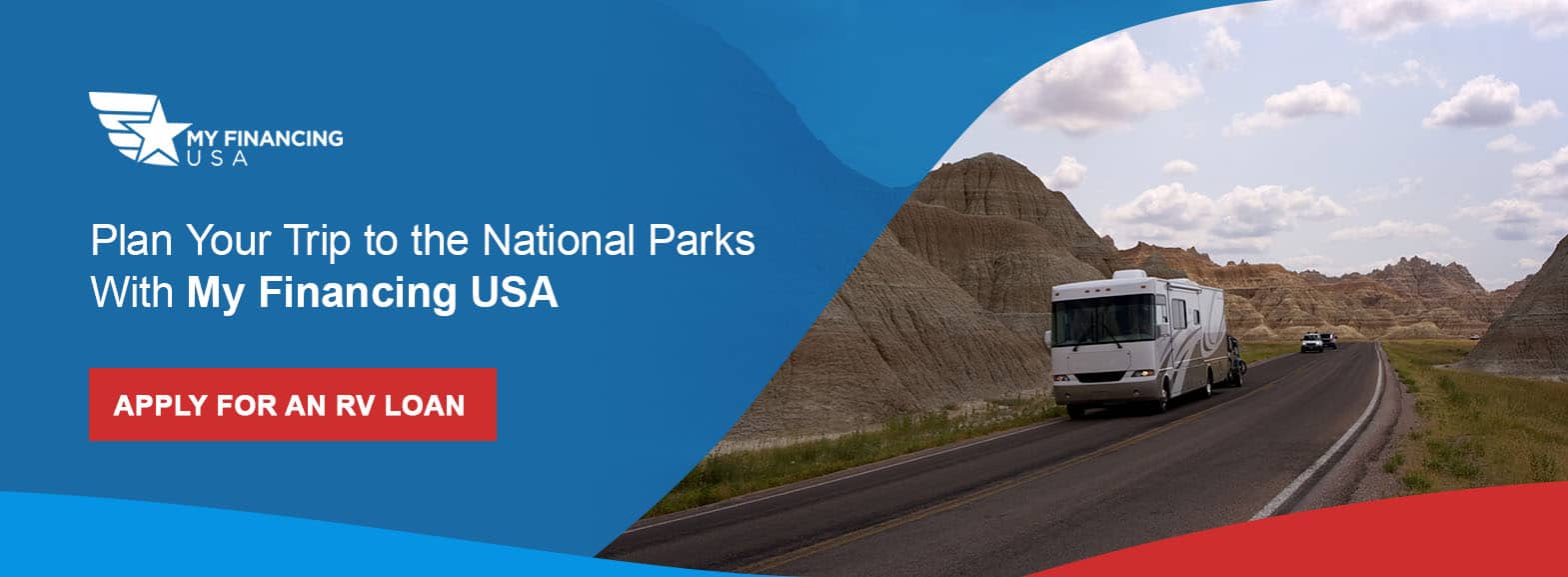
When you want to travel the U.S. and see various national parks, RVs are the way to go. You can travel at your comfort level with various amenities available while opening more opportunities to camp in the parks. In an RV, you can create memories the whole family will look back on for years.
My Financing USA can help finance your RV loan for a more streamlined planning process. Your application can get approved within 48 to 72 hours, so you can focus on where you want to go and see.
Submit an application online today with My Financing USA and begin your next adventure!
Additional Resources on National Parks:
- Top U.S. State Parks
- The Largest State Parks in the U.S.
- How to Plan a National Park Road Trip
- Grand Canyon National Park Road Trip — The Ultimate Guide

